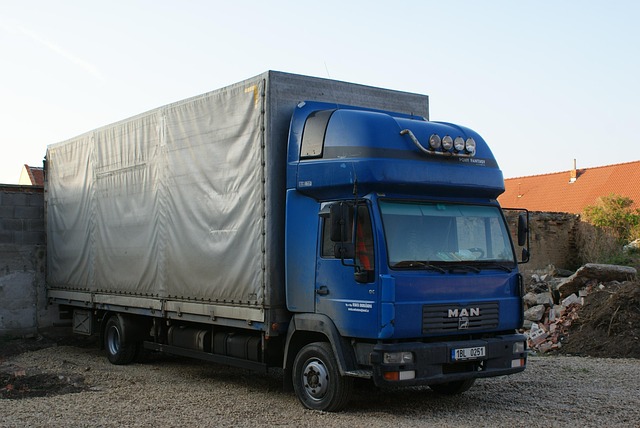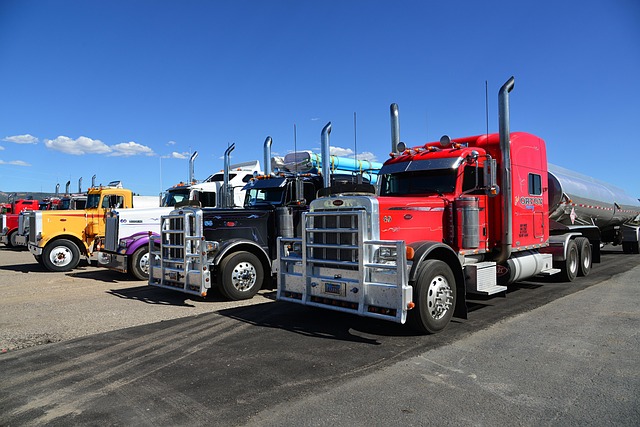Looking to register your car in California? This comprehensive guide breaks down the process step-by-step. From understanding crucial registration requirements and gathering essential documents to performing a DMV VIN verification, we’ve got you covered. Learn how to complete your application, pay fees, and register your vehicle online or in-person with ease. Simplify the process today and hit the road legally!
- Understand California Car Registration Requirements
- Gather Necessary Documents for DMV Visit
- Perform VIN Verification: Steps & Tips
- Complete Application and Pay Fees at DMV
- Register Your Vehicle Online or In-Person
Understand California Car Registration Requirements

Before diving into the registration process, it’s crucial to understand California’s car registration requirements. The state Department of Motor Vehicles (DMV) mandates several key steps for ensuring your vehicle is compliant with local laws. One essential step is the DMV vin verification, which confirms the vehicle’s identity using its unique Vehicle Identification Number (VIN). This process not only safeguards against fraud but also helps in accurately recording ownership details and vehicle specifications.
Additionally, California requires a thorough inspection to ensure your car meets safety standards. This includes checks on critical components like brakes, lights, and tires. For convenience, many individuals opt for mobile vin verification and vin inspection services, allowing them to complete these tasks without visiting a DMV office. These services, often provided by specialized companies, can be particularly beneficial for those with busy schedules or physical limitations.
Gather Necessary Documents for DMV Visit

Before visiting a California DMV office, make sure to gather all the essential documents required for car registration. This includes your vehicle’s Registration Application (Form DV-14), which can be downloaded from the DMV website. Additionally, you’ll need proof of identity and residency, such as a valid driver’s license, state ID card, or passport; two identical recent photographs of yourself; and evidence of insurance coverage.
Another crucial step is to obtain a Vehicle Identification Number (VIN) verification report. You can complete this process online through the DMV’s website or by using a mobile VIN verifier app for a convenient and quick inspection. Alternatively, you can request a vin inspection at a nearby authorized service center. This verification ensures that your vehicle matches the details on file, enhancing the efficiency of your registration process.
Perform VIN Verification: Steps & Tips

Before you register your car in California, performing a VIN (Vehicle Identification Number) verification is a crucial step. This process helps ensure that the vehicle you’re about to register is genuine and has not been reported stolen or had its identity altered. You can conduct this check through a DMV vin verification process which typically involves comparing the provided VIN with records from various sources, including manufacturer databases and law enforcement agencies.
To make this process smoother, consider using a mobile vin verifier application. These apps allow you to perform a vin inspection digitally, saving you time and potential trips to the DMV. Simply input your car’s VIN into the app, and it will cross-reference the data with reliable sources. This method is not only convenient but also efficient, providing instant results that can be used to expedite the registration process at your local California DMV office.
Complete Application and Pay Fees at DMV

To register your car in California, the first step is to complete the necessary application at the Department of Motor Vehicles (DMV). This involves gathering essential documents and providing accurate information about your vehicle. You’ll need to bring along proof of ownership, such as a bill of sale or previous registration, along with valid identification like a driver’s license or state ID card. Additionally, ensure you have the required emissions test results if applicable.
Once your application is ready, it’s time to pay the registration fees at the DMV. The cost varies depending on your vehicle type and other factors. After submitting your application and fees, the DMV will process your request, which includes performing a VIN (Vehicle Identification Number) verification. This step ensures the authenticity of your car’s details, and you can facilitate this process with a mobile VIN inspection or verifier to streamline the verification stage.
Register Your Vehicle Online or In-Person

You have two options for registering your vehicle in California: do it online or in-person at a DMV office. While both methods involve submitting essential documents and fees, each offers distinct advantages. Online registration is convenient and fast, allowing you to complete the process from the comfort of your home. You’ll need to provide your vehicle’s details, including its Make, Model, Year, and unique Vehicle Identification Number (VIN), along with proof of insurance and identification. The DMV will then conduct a VIN verification, which checks the vehicle’s history to ensure it’s safe for California roads.
Alternatively, visiting a DMV office is suitable if you prefer face-to-face interactions or have complex issues. During your visit, a representative can guide you through the process, request necessary documents like title and insurance proof, and perform a mobile VIN verification (using a digital tool) to ensure the vehicle’s authenticity. This method might take longer but offers immediate feedback and support.
Registering a car in California is a straightforward process that requires understanding specific requirements and gathering essential documents. By performing a DVW VIN verification, completing necessary applications, and paying relevant fees, you can efficiently register your vehicle either online or in-person. Remember to keep your registration updated to ensure compliance with state laws and avoid any penalties.
